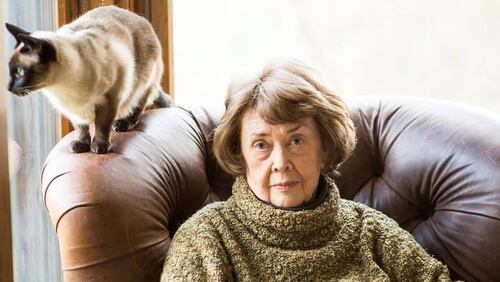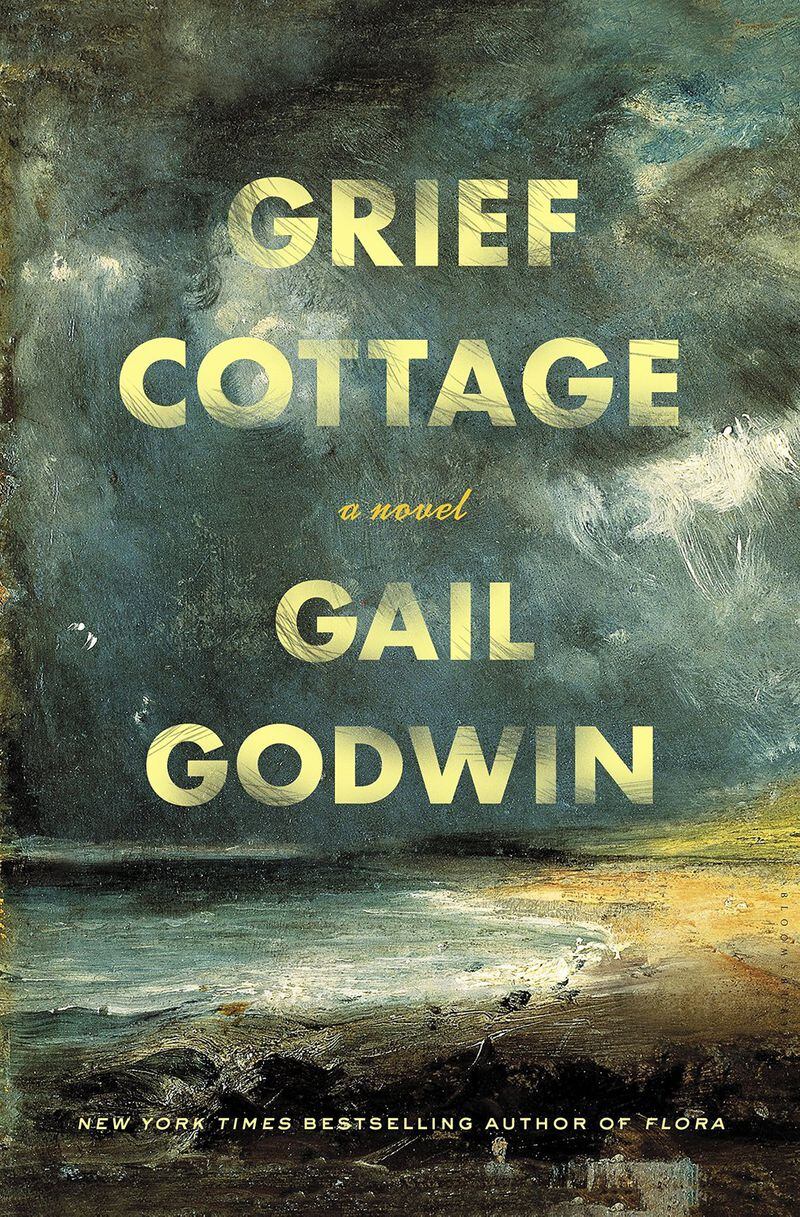What are the rules of ghost stories? Who’s really haunting who?
These questions and more preoccupy Marcus Harshaw, the guarded hero of Gail Godwin’s elegiac “Grief Cottage.” After his mother dies in a car accident, the precocious 11-year-old is sent to live with a great-aunt he’s never met. Charlotte Lee keeps to herself on a tiny South Carolina island, where she paints seascapes with titles like “Sunset Calm” and “Storm Approaching.” Marcus becomes entranced with a property in her paintings, a “picturesque ruin people paid money for.” The rotting heap has remained vacant ever since a family of three vanished during Hurricane Hazel. Locals call it Grief Cottage.
Godwin, a three-time National Book Award finalist, mixes horror and mystery tropes with literary musings on growing up and growing old. The result is a sort of supernatural bildungsroman, less a traditional ghost story and more a cautionary tale about the specter of impermanence.
Marcus recalls his late grandmother gossiping about “Crazy” Charlotte, the fast and free Bohemian with lots of ex-husbands. Although her stories contained grains of truth, Marcus soon learns that no one would mistake Charlotte for Auntie Mame. She’s actually a standoffish loner with a “frosty, mannish haircut” and tendency to speak in monotones.
“Funny how the same person can be an entirely different entity to various people,” Charlotte says, introducing one of the novel’s major themes. Later, her elderly neighbor Coral flips the idea around. “We know so very little about the people we are closest to,” the old woman says. “We know so little about ourselves.”
Godwin proves the point via the mercurial Marcus, an emotional slot machine who randomly spews anxiety, loneliness, awe and, sometimes, wisdom. “How could a person’s moods change so many times in a day?” he wonders. “Was it my age, or was it going to be like this from now on?”
The forced cohabitation of a grieving adolescent with a rebellious spinster in a Spartan beachfront shack is enough to produce ample friction for any novel, but Godwin isn’t just any novelist. Strolling along the beach one afternoon, Marcus collapses into the sand without warning. The panic attack suggests the boy carries unhealed wounds that predate his more recent tragedy.
Once he locates Grief Cottage, he decides it evokes a zombie house, a half-burned husk ready to be washed out to sea. “Somehow, the way Aunt Charlotte had painted it, the picture reminded you of the impermanence of everything and the treacheries awaiting you even on a nice day.”
A gaunt apparition awaits Marcus at the cursed cottage, the ghost of a teenager who vanished in 1954. Marcus spends the next few months investigating the disappearance and trying to converse with the dead. These phantom encounters are frightful at first, but the chills fade once it becomes clear how desperate the boy is to find a kindred spirit.
“How could I consider it a relationship when the person I thought I saw had been dead fifty years?” he asks. “The truth was, I felt love for him the way someone feels love for another living person.”
Marcus struggles to remember the “Weird Tales” he’s read, hoping that works by Roald Dahl and Harlan Ellison may shed light on the hereafter. His inquiry into ghost stories is a crafty metafictional flourish in a book built upon tropes of Gothic horror (innocent orphans, haunted ruins, family secrets, madness). The title itself may be an echo of Gull Cottage, the setting of “The Ghost and Mrs. Muir.”
Yet Godwin refuses to commit to any single genre. When Marcus isn’t wooing the dearly departed, the narrative returns to realistic, sometimes lifeless, encounters with island personalities. Elsewhere, readers may catch a whiff of Dickensian social protest via the sporadic commentary on wealth and class (including a shoutout to “Oliver Twist”).
Asked about her troubled childhood, Charlotte responds with uncharacteristic vigor: “Take your pick of the variations, down through the ages, of the good old family horror story. Try the Greeks, try the Bible, try Shakespeare, or choose from the abundant pity-memoirs on your local bookstore racks.” The statement serves as a harsh counterpoint to the advice Marcus’ mother gave him after a difficult move: “In a new place we can tell people what we want them to know and that will be our past.”
The past is a slippery beast, it turns out, as both aunt and nephew learn after becoming housemates. A health crisis forces Marcus to give up the ghost, temporarily, and play caregiver for his headstrong guardian. The novel’s supernatural overtones don’t fade entirely, but make way for more down-to-earth observations about the quirks of getting old. Coral, the elderly neighbor, tells Marcus, “When you reach my age, you want to perform archaeology on yourself, get beyond family names and given names and polite forms of address.” The specifics of her “archaeology” remain vague, but it’s enough to set the boy’s mind reeling.
“Grief Cottage,” like its daydreaming protagonist, manages to be awkward but likable, full of curiosity and spectacle, eager to know the rules and likely to break them. Though crammed a bit too full of subplots and abstract asides, the novel succeeds in questioning the uncanny and finding life even in a ghost story. “The mind is a wondrous thing, isn’t it?” says Coral. “It hasn’t got to stay in just one place at a time.”
FICTION
‘Grief Cottage’
By Gail Godwin
Bloomsbury
$27, 336 pages
About the Author







